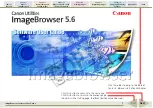
AEQ
PHOENIX MERCURY
2
CONTENTS
1. INTRODUCTION. ...................................................................................................................... 4
1.1. General description............................................................................................................ 4
1.2. Functional specifications.................................................................................................... 4
1.3. Available encoding modes. ................................................................................................ 5
1.4. Compatibility with other AEQ codecs................................................................................. 5
1.5. Compatibility with other manufacturers’ codecs. ............................................................... 5
2. PHYSICAL DESCRIPTION OF THE UNIT............................................................................... 6
2.1. Description of the front panel. ............................................................................................ 6
2.2. Description of the rear panel and connections. ................................................................. 7
2.2.1. Analog line stereo input. ......................................................................................... 7
2.2.2. Analog line stereo output. ....................................................................................... 7
2.2.3. AES/EBU inputs/outputs (optional). ........................................................................ 7
2.2.4. AUX DATA connector (+ IP Reset)......................................................................... 8
2.2.5. Ethernet port (LAN). ................................................................................................ 8
2.2.6. USB Port. ................................................................................................................ 9
2.2.7. Power supply........................................................................................................... 9
2.3. IP interface. ........................................................................................................................ 9
3. CONFIGURATION AND OPERATION OPTIONS DESCRIPTION........................................ 10
3.1. Individual codec control window. ..................................................................................... 10
3.2. IP interface connection modes......................................................................................... 12
3.2.1. PROXY SIP........................................................................................................... 12
3.2.2. DIRECT SIP. ......................................................................................................... 13
3.2.3. RTP Point to Point (RAW)..................................................................................... 15
3.2.3.1. Sending audio to multiple destinations: Broadcast, Multicast and
Multiple Unicast....................................................................................... 15
3.3. NAT TRAVERSAL. .......................................................................................................... 17
3.3.1. Operation without NAT: “OFF (there is no NAT)“. ................................................ 17
3.3.2. Manual NAT: ”MANUAL (router configuration)”. ................................................... 17
3.3.3. AUTO 1 (local network audio)............................................................................... 19
3.3.4. AUTO 2 (local network audio)............................................................................... 19
3.3.5. AUTO 3 (audio over internet)................................................................................ 19
3.3.6. AUTO 4 (audio over internet)................................................................................ 19
3.4. FEC modes and reception buffer configuration. .............................................................. 19
3.5. Coding profiles. ................................................................................................................ 20
3.6. Ethernet Port configuration. ............................................................................................. 21
3.7. RS-232 Ancillary (End to end data channel).................................................................... 22
3.8. SNMP configuration. ........................................................................................................ 23
4. QUICKSTART USER’S GUIDE. ............................................................................................. 25
4.1. Equipment connections.................................................................................................... 25
4.1.1. Power supply......................................................................................................... 25
4.1.2. IP communications interface................................................................................. 25
4.2. Powering up the codec. ................................................................................................... 25
4.3. Setting up a computer to control the unit. ........................................................................ 25
4.4. Audio. ............................................................................................................................... 26
4.5. Establishing an IP communication. .................................................................................. 26
4.5.1. Establishing an IP communication in RTP mode.................................................. 26
4.5.1.1. Finalizing an IP communication in RTP mode. ....................................... 28
4.5.2. Establishing an IP communication in PROXY SIP mode. .................................... 28
4.5.2.1. Finalizing an IP communication in PROXY SIP mode............................ 30
4.5.2.2. Receiving and accepting an IP communication in PROXY SIP mode.... 31
4.5.3. Establishing an IP communication in DIRECT SIP mode..................................... 31
4.5.3.1. Finalizing an IP communication in DIRECT SIP mode. .......................... 33
4.5.3.2. Receiving and accepting an IP communication in DIRECT SIP mode... 34



































